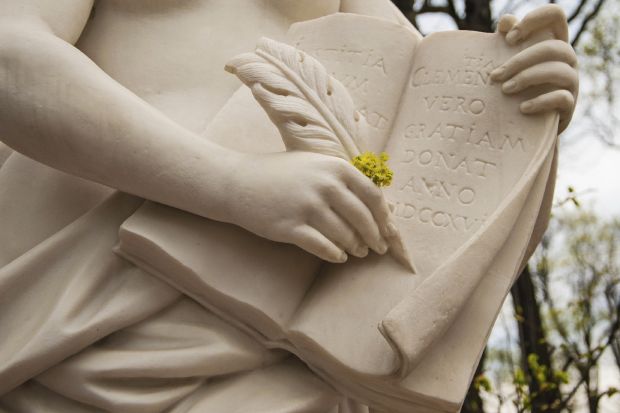The study of history is always present-centred, whether or not so intended. It serves present purposes and its agenda is shaped by present imperatives and fashions. Rosemary Hill’s book Time’s Witness engages chiefly with the varied impact of the French Revolution and then Romanticism on historical consciousness and imagination, on subject matter and discourse. As a result, social history – people’s history, not elite history – began to claim a place in historians’ pages, museums started to take on recognisably modern forms, and the rights of cultural property were vigorously debated.
Antiquarianism occupies pride of place in Hill’s account of these changes, with 1789 and 1851 (the year of the Great Exhibition) its principal opening and closing dates. Before and after them, the study of history had other, very different, fixations. The “Gothic”, principally in its architectural expressions, looms large in these pages, fuelled by controversy over its disputed origins and by the massive destruction of tombs, churches and other buildings as France reinvented and relaunched itself in the midst of its revolution. Salvaging some of the material remains of this rejected past gave a major fillip to the antiquarians who studied it, and a thriving export trade in French artefacts to England rapidly developed. Anglo-French scholarly cooperation, jealousies and rivalries are – unsurprisingly – all part of the story, played out not only in museums and learned societies but in pseudo-medieval English country residences fitted out with relics from the country that had disowned them.
The antiquarian impulse embraced not only scholars but also writers such as Walter Scott and Victor Hugo. (Scott gets by far the most space given to any individual in Time’s Witness not just on account of his huge output of novels but because of the vast numbers who signed up to his view of the past and its relevance to the present.) Architects such as the Pugins, father and son, get much attention here and Hill – the author of the prize-winning work God’s Architect: Pugin and the Building of Romantic Britain (2007) – is a reliable guide to their significance. Romantic Antiquarianism reached out no less importantly to the theatre, opera and the study and staging of drama – especially in the rediscovery and reinvention of Shakespeare.
Charlatans and forgers too muscled in and find a place in Hill’s account. Here the Sobieski Stuart brothers were surely in a class of their own, not only because of their self-invention as Jacobite royalty but because of their broader fictionalisation of Scottish history.
Hill seeks to “rescue antiquarianism from oblivion and the condescension of posterity” – and it has to be said she does a very good job. Her book rests on secure foundations of research, she writes very effectively and her publishers have generously allowed her to include many well-chosen, beautifully reproduced illustrations. But she cannot, of course, claim to be the first in the field. Rosemary Sweet’s Antiquaries: The Discovery of the Past in Eighteenth-Century Britain (2004) covered at least some of the same ground. Hill’s pages are sometimes too densely detailed for their own good. And – very rarely – she makes mistakes. The prolific Romantic novelist Charlotte M. Yonge, for example, is given the wrong father, William Heathcote – admittedly a near neighbour in Victorian Hampshire.
R. C. Richardson is emeritus professor of history at the University of Winchester.
Time’s Witness: History in the Age of Romanticism
By Rosemary Hill
Allen Lane, 408pp, £25.00
ISBN 9781846143120
Published 24 June 2021
后记
Print headline: Rescued relics of antiquarianism
请先注册再继续
为何要注册?
- 注册是免费的,而且十分便捷
- 注册成功后,您每月可免费阅读3篇文章
- 订阅我们的邮件
已经注册或者是已订阅?

